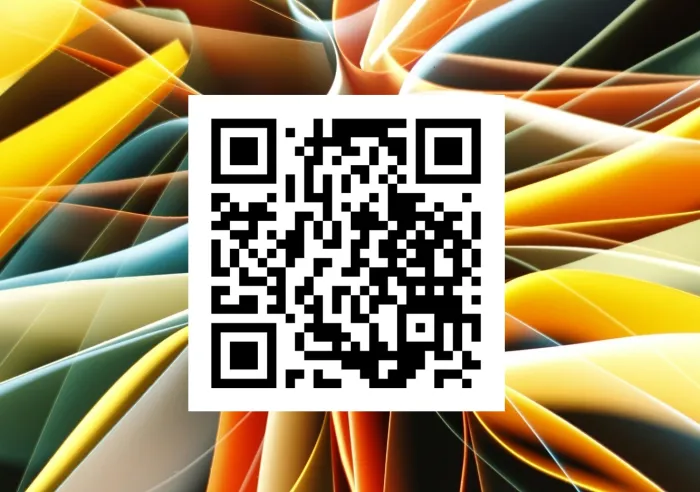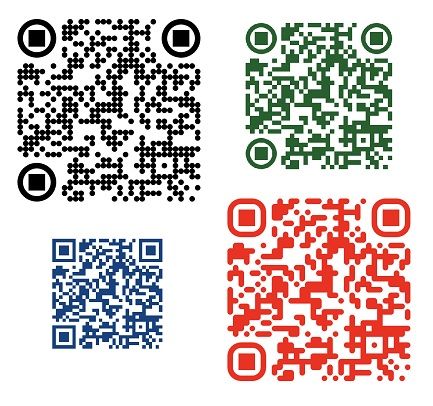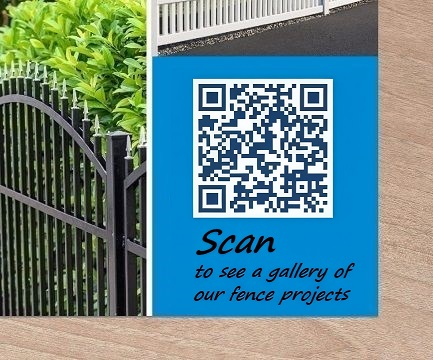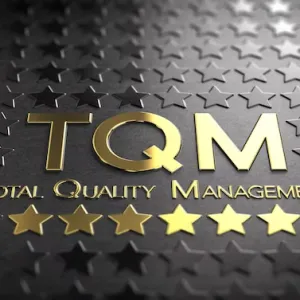Print Marketing: Maximize Engagement and Sales with QR Codes

estimated reading time: 7 minutes
What is a QR Code?
Invented in 1994 by Japanese engineer Masahiro Hara, a QR code (short
for "Quick Response" code) is a type of barcode that offers a convenient way to
store and access encoded data. QR codes can be quickly read using a scanning
device, such as a smartphone that has an app for viewing and processing the
data.
QR codes are extremely popular for marketing because they can
provide the user with immediate access to a webpage, video, promotional offer,
social media profile, PDF, contact form, customer testimonials, or any other
digital destination. Scanning a QR code is much quicker and more convenient
than typing a URL into a browser or performing an online search.
Whereas traditional barcodes store data using a series of
parallel lines, QR codes store data using a square-shaped grid. Because a QR
code is two-dimensional, it can store much more data than a standard barcode.

The Anatomy of a QR Code
The grid of a QR code contains an array of data cells, which
are usually comprised of small pixel-like blocks or dots. A QR code also contains larger modules in three of its corners. These are typically located in the top
left, top right, and bottom left corners. Known as "finder patterns", these three
corner modules help define the boundaries of the QR code so a scanning device
can quickly locate the grid and orient to it properly.
There is also a small square located within the data cells,
usually near the bottom right corner. Known as "alignment patterns", these
squares help ensure the QR code can still be read even if it's distorted or
viewed at an angle.
Though most QR codes are created with the conventional color
scheme of black and white, they can also be printed in various colors. Regardless
of the color(s) used, it is essential that QR codes have high resolution and good
contrast against their background.
It is also important that the QR have a "quiet zone" around
its perimeter. Surrounding the QR code with blank space - typically white -
helps to clearly separate the code from any nearby images or text. Having this buffer
zone ensures the QR data can be decoded without any interference.
Static QR Codes vs Dynamic QR Codes
The data embedded in a Static QR code is fixed information.
Once created, scanning the code will only lead to the destination originally
assigned to it. The data link cannot be changed. Static QR Codes can be
generated free of charge and are readily available. As such, they are good for
general purpose use. However, Static QR codes lack detailed tracking capabilities.
A Dynamic QR code will redirect to a URL managed on a
server. This allows the code's destination to be updated without changing the
QR code itself. The ability to make updates in real time provides an ideal solution
for companies with evolving needs. In addition, Dynamic QR codes can provide
valuable analytics for tracking a campaign's performance, such as the number of
scans, the time and location of the scans, and the devices used. Dynamic QR codes
usually require a fee and/or an ongoing subscription but they are still a good
value when weighed against the advantages they offer.
7 Benefits of using QR Codes in Print Marketing
When added to brochures, catalogs, or other marketing
literature, QR codes can greatly amplify the level of customer engagement,
leading to more inquiries and sales. Below are some of the primary benefits of
incorporating QR codes into your print marketing campaign:
1. QR Codes add an Interactive Experience
QR codes provide a simple way for current and potential customers
to actively interact with your brand. By scanning the QR code printed on a
brochure, postcard, or other marketing piece, consumers can access a variety of
digital experiences. For example, a QR code can lead to a company's social
media profile, show additional information about products or services, link to
a demo video, display a sign-up form, provide directions to a retail store, and
so on. Basically, a QR code can guide people to whatever additional information you deem
important to the selling process.

2. QR Codes Encourage Immediate Action
Traditional calls-to-action on printed marketing pieces
typically require people to perform a task, such as manually entering a URL into a web
browser or dialing a phone number. QR codes, on the other hand, provide almost
immediate access to this information. A quick scan with a smartphone is all it
takes to visit a webpage or initiate a phone call. The instant connection
provided by a QR code is also great for presenting a limited time offer or
motivating people to register for an upcoming event.
3. QR Codes Reinforce the Marketing Message
By printing QR codes directly onto promotional literature, customers
gain easy access to information that supports the marketing message and helps
them make an informed buying decision. For example, a QR code could link to in-depth
specifications about products or services, demo videos, customer testimonials, case
studies and customer success stories, virtual tours, sales and special discounts,
FAQs, certifications and awards, or any other compelling content that helps to demonstrate
value, build confidence, and establish trust.
4. QR Codes Boost Conversion Rates
As mentioned at the beginning of this article, QR stands for
"Quick Response." By providing a super quick link to supplemental information,
a special deal, or something else of value to customers, QR codes make it super
convenient to interact with a company's brand. Customers absolutely love things that help
save time, reduce effort, and avoid frustration. Needless to say, the more convenient a business can make an interaction, the better the chance for high customer satisfaction
and the willingness to make a purchase. Another recommendation for increasing scan
rates and boosting conversions is to clearly state where scanning a QR code will
lead, such as "Scan to claim your 30% off coupon" or "Scan to see a 40-second
product demo."
5. QR Codes can Track Performance
Unlike digital marketing, print marketing doesn't
automatically track user interactions. So it can be difficult to determine how
many people saw your promotional offer and then took action as a result.
However, QR codes, especially Dynamic QR codes, can help in this regard. Dynamic
QR codes redirect all scans to a tracking platform, capturing detailed metrics such
as how many people scanned the code, when and where they scanned it, as well as
the device they used. By analyzing this data, especially when using A/B
testing, companies can better understand the preferences of their audience and
adjust their campaigns accordingly.
6. QR Codes Fit Neatly into a Print Layout
Even though QR codes can store a great deal of information,
they have a relatively clean and simple appearance. The size of a QR code is
also scalable, which allows the code to fit neatly into the layout of your print
materials without cluttering the design. Plus, QR codes can be made in a
variety of color schemes, as long as the chosen color(s) offer good contrast.
In most cases, a small logo can even be added to the center of the QR grid to add
visual appeal and reinforce brand identity. By the way, it is recommended that
a QR code be tested using several different devices to ensure it functions as
intended.

7. QR Codes are Very Cost Effective
Static QR codes can be created free of charge. Dynamic QR
codes, though not free, are still a good value because of the flexibility and
tracking capabilities they provide. Also, because QR codes direct people to
online content, this linked content can be updated without having to update the
physical marketing pieces, thus saving the expense of reprints. Plus, by using a
QR code to link to online content, the amount of information that needs to be printed
on the physical copies can often be reduced, thereby lowering the amount of ink
and paper needed for the print project.
Color Vision is always ready to assist with your Custom Printing needs!
If you are looking for custom printed catalogs,
brochures, flyers, postcards or any other marketing pieces, be
sure to get in touch with Color Vision. We built our strong reputation in
the printing industry by offering quality printing at affordable prices!
As a full service printer, we offer both offset and digital
printing services. This allows us to assist with just about any type of
printing need you may have.
So if you have an upcoming print project, use our
easy Quote Request form to send us your specifications and we will be
happy to email a quote to you. Or, if you prefer to discuss your project by
phone, we can be reached at 800-543-6299.
As always, we look forward to assisting with your next print project!
Related Articles

The Golden Touch: 5 Ways Foil Stamping Enhances Your Brand
Read This Article

5 Finishing Techniques to Elevate your Next Print Project
Read This Article

Direct Mail Marketing: 8 Benefits of Variable Data Printing
Read This Article